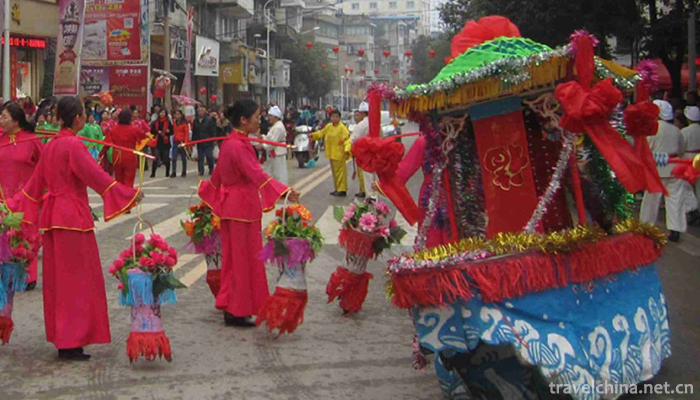Automative lighting
Car lights are also known as "teasing Momei" and "running a dry boat". It is mainly performed around the Spring Festival.
On June 7, 2008, the car lights declared by Chongqing Quyi Troupe were listed in the second batch of national intangible cultural heritage list with the approval of the State Council. Heritage serial number: 781 V-88.
Form of performance
There were three performers, one for Momei, one for Xiaohua, and one for the rickshaw driver or Fuweng. There were also seven performers. In addition to the above three performers, four more "newspapers" (players) with lanterns were added. The lamp troupe is led by the old artists who are highly skilled in performing in the countryside. They connect some people who like to play with the lamp in series and temporarily form a "car lamp" troupe. During the Spring Festival, they play with the lamp everywhere, which will be dissolved immediately after the Spring Festival. The performance of "Car Lantern" starts with Xiao Huafa holding a flower folding fan running field, teasing out the younger sister (mostly dressed as a man) who sits in the "float", wears sunglasses and dances with handkerchiefs, and then improvises various kinds of funny words related to festivals, farming and folklore, mainly with humor and amusement. Momei handles the edge of the car in the boat and sways forward and backward with the lyrics, her face is charming and shy. The coachman or Fuweng paddles the cart in the shape of a boat according to the tune. After Xiaohualian led the singing, others helped to sing along. After each period of singing, the traditional routines such as "turning a treasure", "pulling ants" and "sifting lotus flowers" are used to transform the formation in the sound of gongs and drums. Its performance skills can be summarized as "a girl should be stable, a face should be amusing" eight characters, the aria has two parts: super-cavity and multi-cavity.
Libretto
Most of the lyrics belong to the upper and lower structure, with rhyming sentences. Most of them are seven-character sentences, often with linings and inlays. The singing tone is subtle and the tune repeats.
Accompaniment instrument
There are Erhu, Yueqin, March, Sihu, gongs, drums, four panels and so on.

0 Questions
Ask a Question
Your email address will not be published.